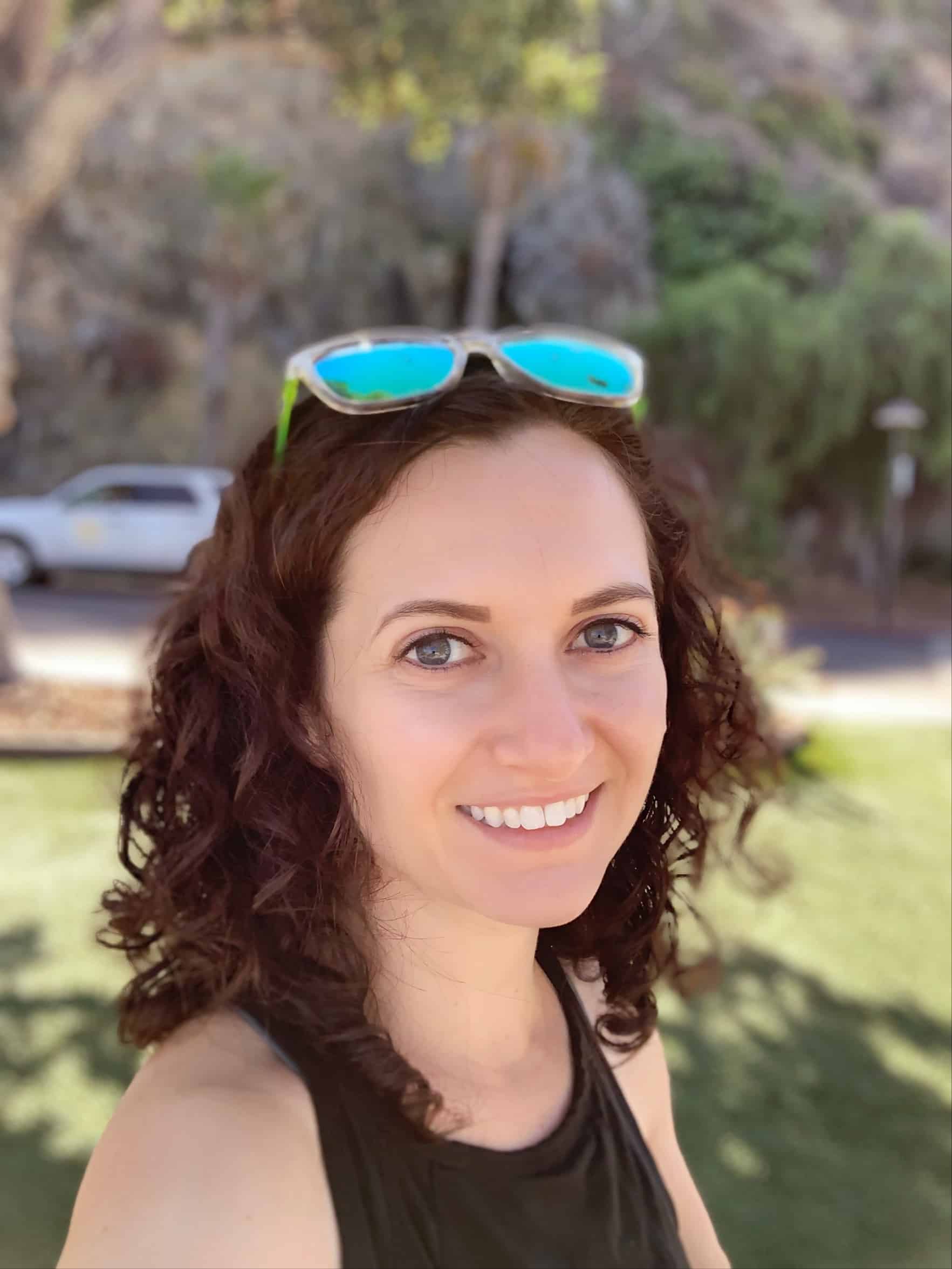Whether you’re looking for love on a dating app, building an online brand, or simply posting to the ‘Gram, you want your selfies to look amazing.
Remember that photography is an art; this doesn’t change when you play the dual role of photographer and subject.
Before snapping a quick self-pic and uploading it for the world to see, there are many factors to consider. Good lighting plays a significant part in any flattering selfie, as do the camera angle, your posture, your smile, and the background you choose, among other things.
This article will tell you exactly how to take a good selfie. Here are a few tips to taking better selfies:
Contents
- Don’t Go Straight-On
- Use AI Technology To Get The Perfect Selfie
- Why Background Matters
- Let There Be Light (But Not Too Much)
- Avoid Shadows
- To Flash, Or Not To Flash…
- Be Confident!
- Are You Getting My Good Side?
- The Eyes Have It
- Smile!
- What’s Your Inspiration?
- Try Using An App Or Filter
- Beware The Uncanny Valley (Don’t Over-Edit)
- Take Your Perfect Selfie To That Next Level With A Selfie Stick
Don’t Go Straight-On
Unless, for some reason, you’re snapping your own mug-shot for the local police department, never take a selfie straight-on. Camera lenses tend to make the subject at the center of the frame (in the case of a straight-on selfie, your nose) appear slightly flatter and broader, rarely a desirable look.
It may take a bit of experimentation to find that perfect angle, but it’s more than worth it. Try tilting your head, holding your camera slightly higher, or tilting your phone. You may feel silly standing in a public place trying to find that ideal combination, but the results will more than makeup for a minute or two of awkwardness.
Use AI Technology To Get The Perfect Selfie
Using a device like the Selfie Tracker Pro allows you to achieve the best selfie possible. It utilizes AI technology and tracks your movements. So you no longer need a camera person in order to achieve a full-body selfie or when shooting a video. Whenever you walk, the device will move along with you and keep your phone pointed at you at all times. It’s great for using for selfies as well as videos.
You can also attach the device to a tripod. So instead of having to take a picture or video, then go to the tripod and readjust it in order to capture a new angle, all you have to do is put your phone on the device and you can utilize multiple angles and positions without ever having to readjust your phone.
Why Background Matters
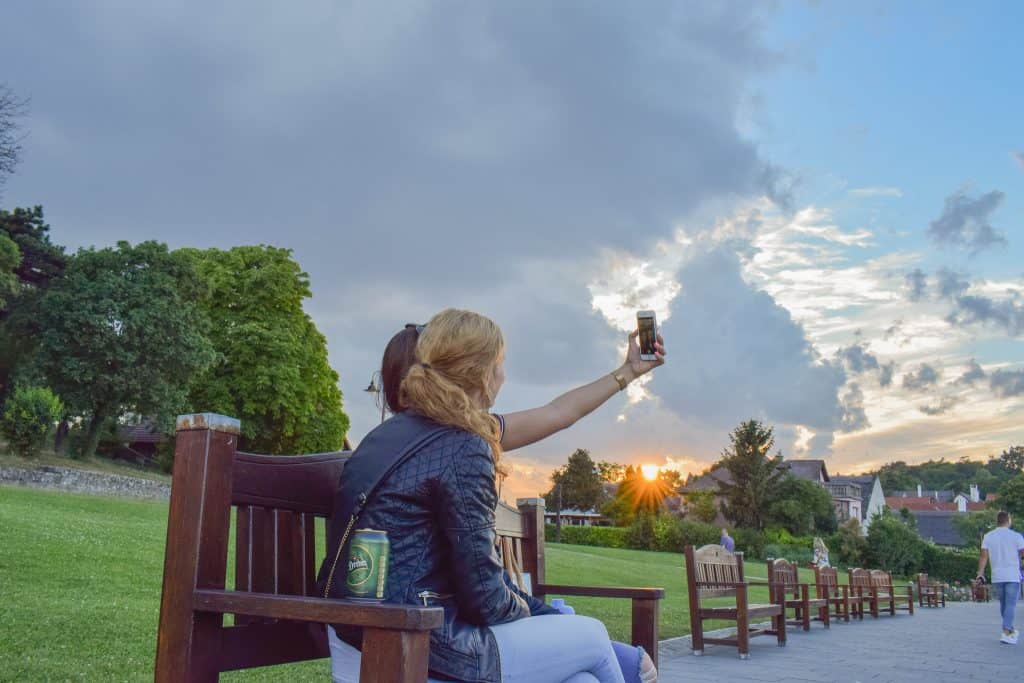
To make your selfie stand out from the pack, it’s important to choose an interesting background. When choosing the perfect spot for that pic, avoid overused backgrounds. No matter how good you look, a cliche background (a car selfie, for example, or a mirror-shot) will diminish the effectiveness of your selfie.
When choosing a background, don’t be afraid to get creative. If you can’t find that perfect, interesting background, though, don’t panic. Instead, try changing your background completely, a technique we’ll touch on later.
Let There Be Light (But Not Too Much)

Controlling the angle and the amount of light on a subject is key to taking a good selfie. Few things affect the quality of a picture so completely as available (or unavailable) light. Too much can make an image seem washed out; too little will make it dark and even blurry.
Think back to your grade-school photos. Remember being told to lift your chin, and turn your head slightly? Did you notice what looked like upside-down umbrellas positioned behind and around the lights? These are just some of the tools used by professional photographers to control lighting.
Of course, finding just the right balance between too much and too little light is subjective, which is one of the reasons photography is an art and not a science. When taking selfies, avoid direct sunlight when outdoors. Harsh fluorescent lights like the ones you likely have in your bathroom and kitchen should also be avoided.
When taking outdoor selfies, for optimal natural lighting, the best times are just before sunrise and just after sunset.
Avoid Shadows
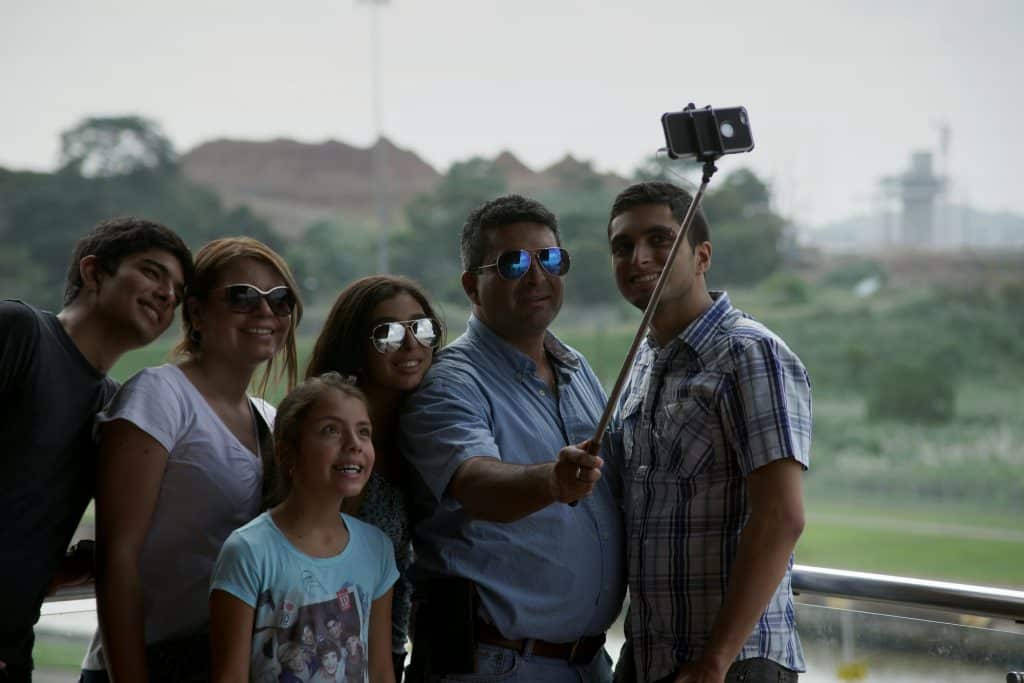
If you’re looking for a great way to ruin an otherwise beautiful selfie, snap that pic in the shadows. Rarely does a shadow falling across a subject (especially a face-shot, in the case of selfies) improve the look of a photograph. Shadows can cause illusions like double chin, dark circles, etc…
To avoid selfie-destroying shadows, try taking your shots beneath the shade of a tree or large structure. Another great trick for handling shadows is to take your selfie with your back to the sun. This serves two purposes: it will prevent shadows from ruining your selfie and eliminate needless squinting.
To Flash, Or Not To Flash…
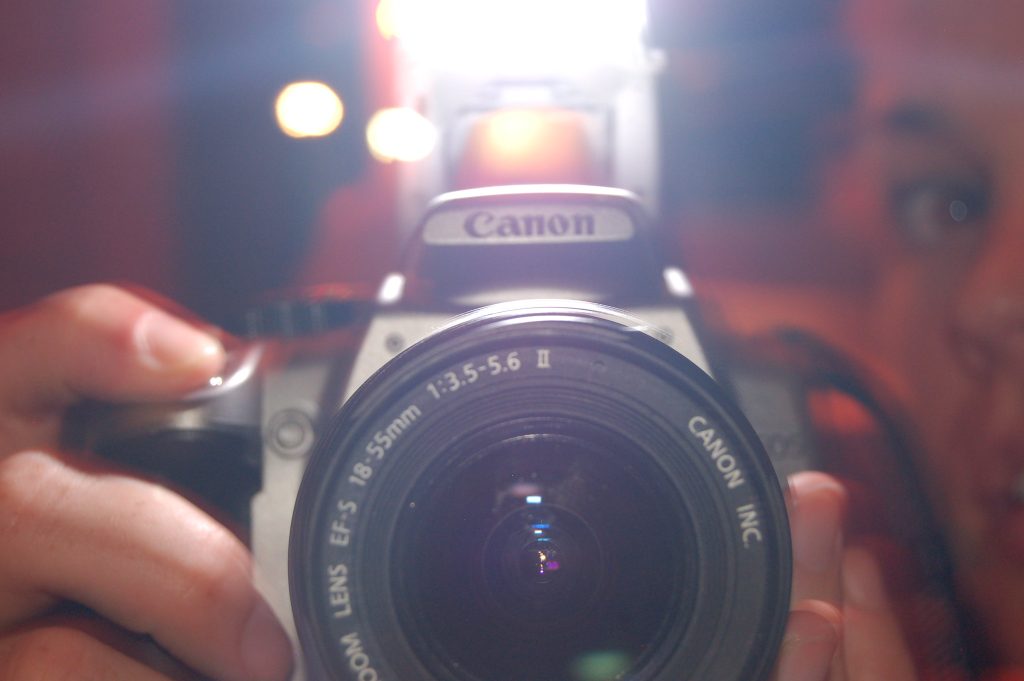
Using a flash to illuminate your selfie can be either the best or worst decision you make, depending on the subject, background, and available natural light.
We’ve all seen those photos, the ones where our closest friends and relatives look eerily possessed, their skin tone washed-out and their eyes glowing with what seems to be red fire. To avoid appearing like an extra in a low-budget horror film, keep in mind that flashes are best used indoors or in areas of deep shadow.
If a flash is necessary due to a lack of natural light, and your selfies continue to look like postcards from the underworld, remember the adage “tilt something.” Often a slight change of camera or subject flattering angle can solve the problem.
Be Confident!
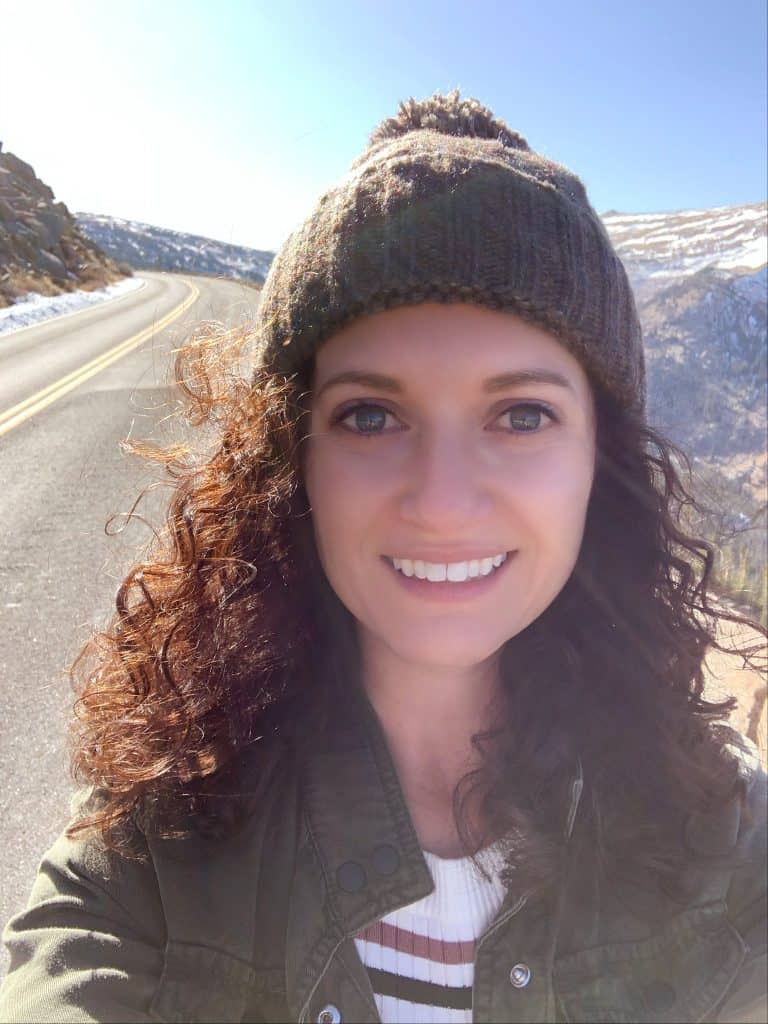
Confidence is always the best accessory when you want to look your best. As such, you’ll want to make sure confidence comes through in your selfies.
Confidence can be expressed in photos through your eyes, posture, and facial expression, among other things. Unfortunately, not one of us goes through life constantly feeling confident. So how can you project an attitude of “what, me worry?” for your selfie?
To appear more confident in your selfies, take a little time to prepare before you snap. There are scientifically proven methods for boosting self-confidence; why not take advantage of them next time you take a selfie?
Mild exercise is known to boost self-confidence. Try doing a few jumping-jacks or knocking out a few pushups before taking that selfie. Don’t overdo it, of course; unless you’re a fitness guru, sweaty selfies are likely not what you’re going for.
Another way to boost confidence is by using “power poses.” or “selfie poses” Unlikely as it may sound, standing tall with your hands on your hips or with your arms folded against your chest (think over-used superhero selfie poses) boosts confidence. Just remember to do these before your selfie and not during.
Finally, affirmations boost confidence. Repeated affirmations of positive, healthy statements can profoundly impact our level of confidence, especially when declared in front of a mirror.
Are You Getting My Good Side?
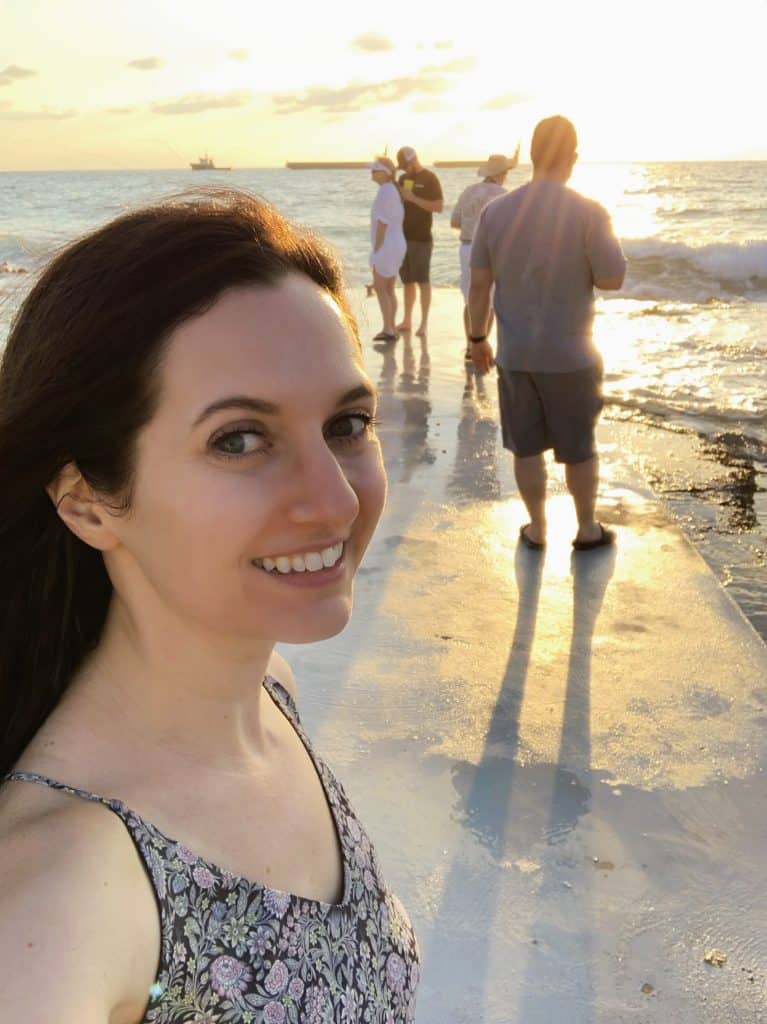
Getting someone’s “good side” in a photograph has become something of a cliche, but that’s because it’s rooted in truth. Most people, including world-famous models and actors like Kim Kardashian, prefer one side of their face to the other. If you’re honest with yourself, you probably do too.
A good photographer will work with their subject when the situation allows. When you take a selfie, remember that you play the dual role of photographer and subject. In your role as subject, don’t overrule the instincts of your inner photographer. Don’t let your artistic need to control every aspect of your selfie rob you of spontaneity.
If you believe you have a good side, as most people do, why would you not highlight that side in your selfie? If you’ve never considered this, do so the next time you’re in front of a mirror. You may be surprised by what you notice. It may be that small but unseemly bump on the bridge of your nose or the remnants of ance you’d like to hide; perhaps it’s a particularly cute freckle-cluster or beauty mark you’d like to accentuate.
The Eyes Have It
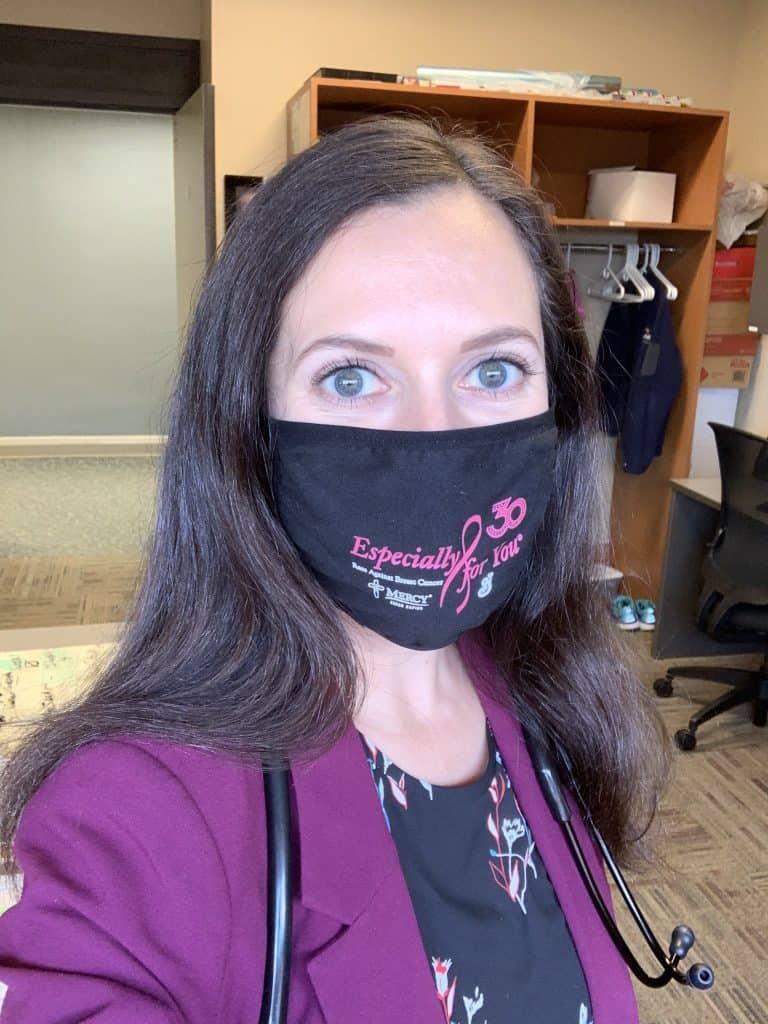
The first thing we look at when we meet someone is their eyes. As the saying goes, the eyes are the windows to the soul. Intent, desire, interest, focus, attraction, and confidence are all signaled by the eye, often in ways that are barely perceptible to the conscious mind. Our unconscious minds, though, are all over it.
Because so much of who we are may be expressed through the eyes, be aware of what messages your eyes may be sending in a selfie.
While it’s never advisable to face your camera directly while taking a selfie, you want to make sure you’re looking directly at the camera. This creates a sense of connection with viewers of the selfie.
Be aware of any unnecessary tension around your eyes and consciously soften your expression before clicking that pic. Some people suggest imagining you’re trying to seduce the camera lens or that you’re about to laugh good-naturedly.
Smile!

A genuine smile goes a long way. Your smile says a lot about you, probably more than you’d like it to. A fake smile often looks insincere, and it can look downright unsettling when you add too many filters.
You can take the time to find a real smile that you think looks good by practicing in a mirror, but the truth is we all tend to look best when smiling naturally. Again, it’s about connection. Try thinking of something humorous or heartwarming as you pose for your selfie and just let your face react naturally.
What’s Your Inspiration?
There’s a reason you’re snapping this selfie or series of selfies. What is it? Are you simply sharing a great day with your followers online, or are you promoting a business? Are you looking for a new love or a casual fling? Whatever the reason, odds are you aren’t the only one doing so.
So do a little research; see what’s out there. If you’re looking for more followers, see what the major influencers are doing, and see if you can glean any inspiration there. Note the great lighting they use, the backgrounds they choose, and the makeup they wear, among other things. Try finding something you like about two or three popular selfies, then incorporate them all into a selfie that expresses who you are as an individual.
Try Using An App Or Filter
Don’t panic if you’ve used all the above suggestions and your selfie still isn’t quite the masterpiece you’d imagined. Some after-the-fact fixes can hide a multitude of sins.
From Adobe Photoshop Fix to Facetune, from Perfect 365 to USCO, there is no shortage of good filtering and photo-editing apps. You can even use Camera Roll (iOS Users). Whether you’re looking to adjust the contrast of your selfie, airbrush away some stubborn acne, or even completely swap backgrounds, some products are inexpensive, easily accessible, and simple to use.
With that being said, it’s crucial to use one of the many Photoshop & Literoom online courses if you are serious about creating edited images that actually look professional.
Beware The Uncanny Valley (Don’t Over-Edit)
Filters can be great tools for enhancing your selfies but beware of over-editing. We’ve all seen those pics that look somehow creepy, as though the subject was not a person, but an incredibly close approximation: an avatar. In the world of robotics, this is called “the uncanny valley,” and it is scientifically proven to give people the creeps.
So use that app sparingly; don’t filter away your humanity while you’re airbrushing that persistent but temporary blemish.
Take Your Perfect Selfie To That Next Level With A Selfie Stick
By keeping the selfie tips mentioned above in mind, you’ll be able to raise your selfie game significantly. There are physical limits to taking selfies, though, most notably the length of your arm.
Luckily, technology has stepped in to broaden the boundaries of selfie-taking. To add that final level of professionalism to your selfies, consider investing in a selfie stick. Selfie sticks are either handheld or tripod-mounted and allow you to take selfies from a greater distance than arm’s length.
The Nyoolo Auto Tracking Tripod Stick for Selfies is excellent for taking that perfect selfie, or even for vlogging. Nyoolo uses dual-core AI to recognize your face and form so that it can track your movements quickly and fluidly. Inexpensive and easy to use, this Tripod Stick works with iPhone and Android.
If you prefer a handheld stick, consider the Bluehorn Portable 40 inch Aluminum Alloy Selfie Stick, which can be held by hand or mounted on its included tripod. The Bluehorn Stick for Selfies is foldable, extendable, and easy to recharge.
So there you have it, your complete guide to how to take a good selfie with our top selfie tips. Now, get out there and live your best life, being sure to capture and share all the meaningful parts along the way!
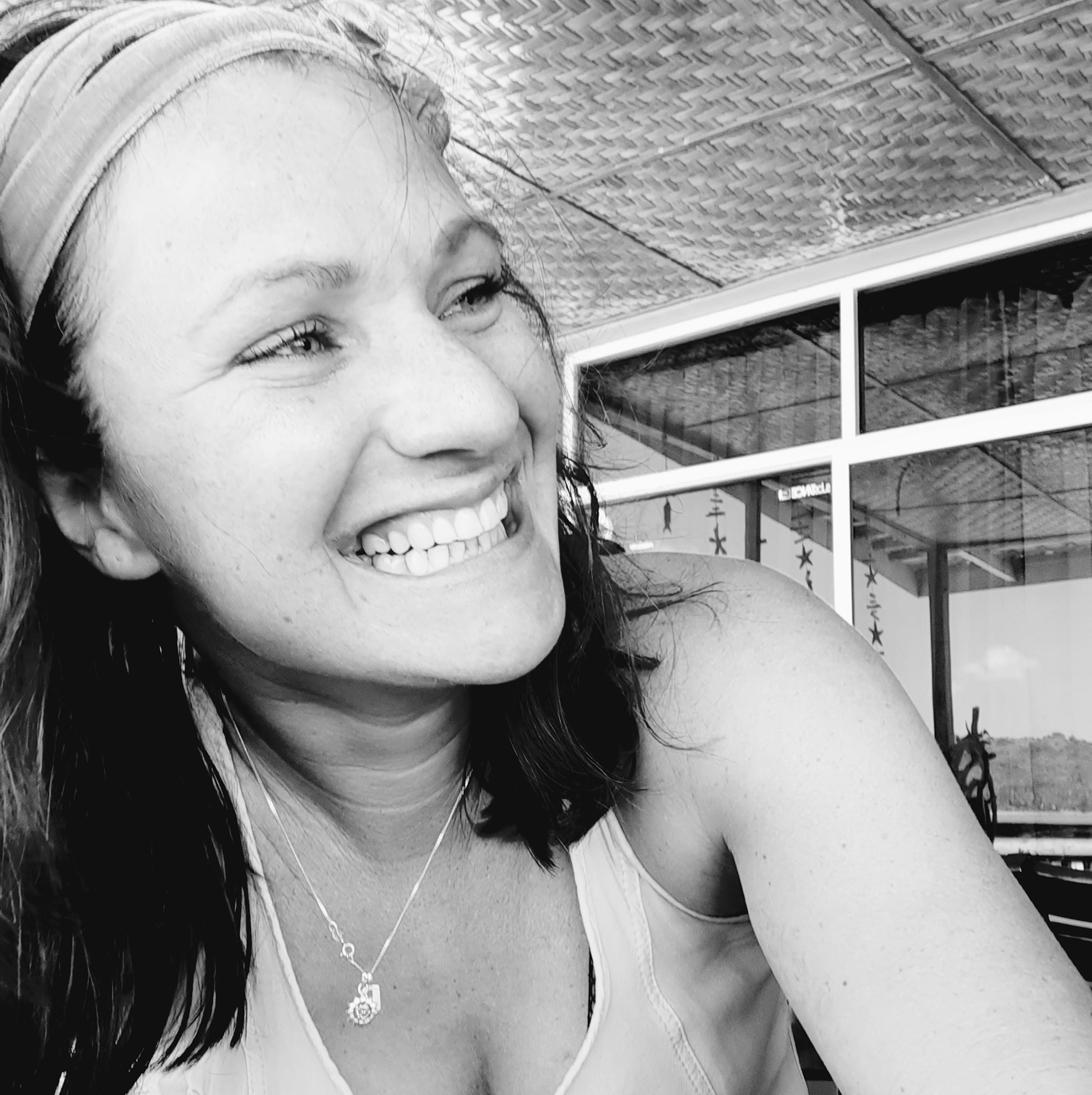
About Author
Rachel Noël is a professional photographer and videographer from the UK with over 10+ years of experience. Rachel specializes in Underwater, Tavel & Portrait photography among other areas.
